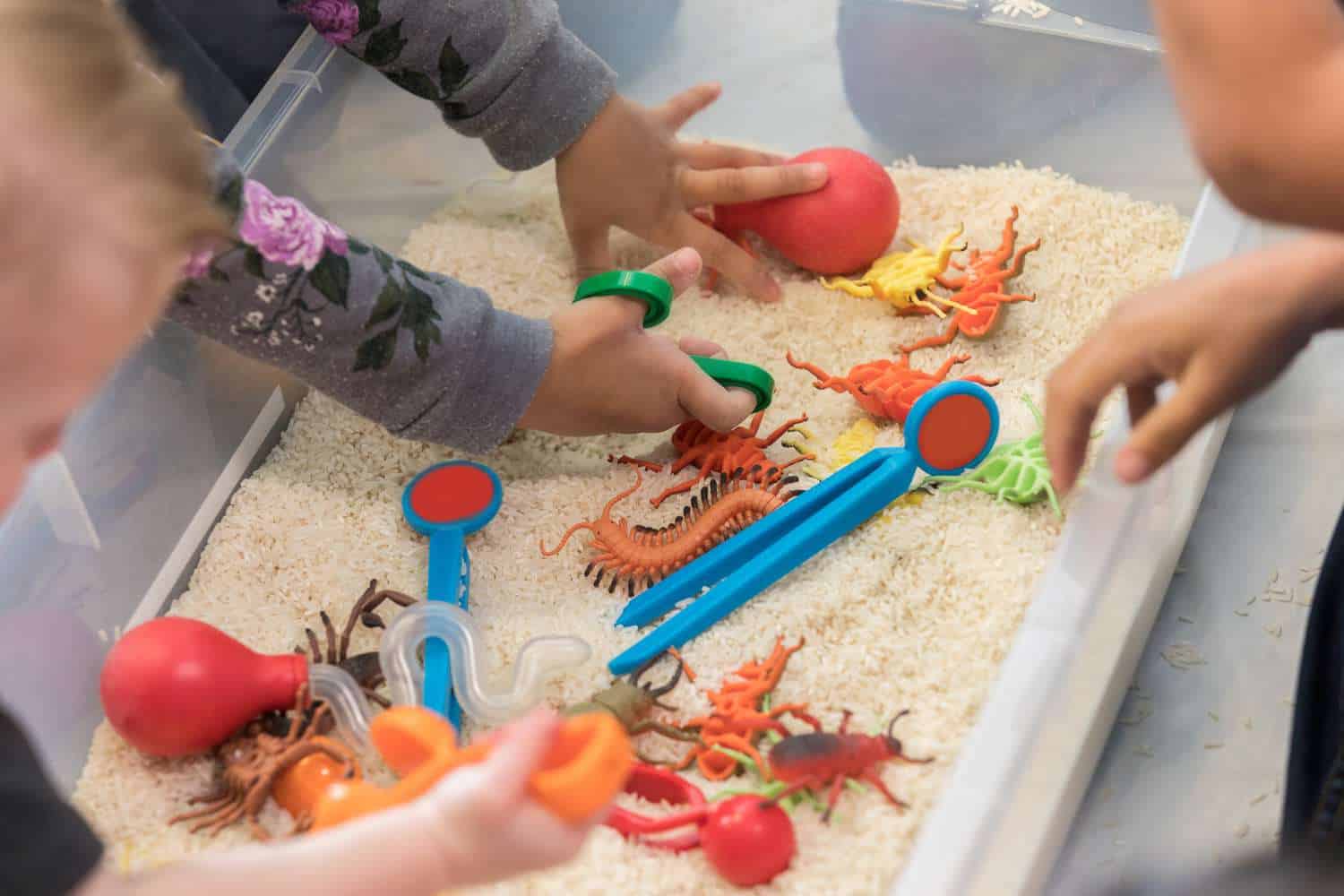Embrace the Joy of Crafting Homemade Sensory Toys!
Hey there, super parents! Are you looking to add a sprinkle of fun and a dash of educational value to your child’s playtime? Well, you’re in the right place! In this ultimate guide to homemade sensory toys, we’re about to dive into the whimsical world of DIY creativity that’s not just going to delight your little ones but also support their growth and development. And the cherry on top? It’s incredibly budget-friendly!
What Are Sensory Toys and Why Are They Important?
Before we roll up our sleeves and get messy with our homemade concoctions, let’s take a moment to understand what sensory toys are. Sensory toys are tools designed to stimulate a child’s senses, including touch, sight, hearing, and even sometimes taste and smell. They’re essential for all kids, especially for those with sensory processing challenges, as they help refine their sensory perception, enhance motor skills, and encourage cognitive development. Plus, they’re a hoot!
The Benefits of DIY Sensory Toys
Going the DIY route for sensory toys is a fantastic way to get your kids involved in a creative process, allowing for bonding time and an opportunity to tailor the toys to your child’s preferences and developmental needs. And let’s not forget the satisfaction of making something fabulous with your own hands!
Let’s Start Creating!
Now that we’ve covered the ‘whys,’ it’s time to tackle the ‘hows.’ Below are several easy, entertaining, and educational sensory toy ideas that you can create using materials you probably already have at home. So, let’s get those creative juices flowing!
Rainbow Rice Sensory Bin
Materials Needed: White rice, food coloring, vinegar, and a large container or bin.
Creating a Rainbow Rice Sensory Bin is like bringing a piece of the colorful sky right into your living room. It’s a simple and beautiful way to encourage fine motor skills and color recognition. Just dye your rice in a rainbow of colors, let it dry, and pour it into the bin. Voila, you have a magical playground!
Don’t forget to add cups, spoons, or even little toys for added fun and learning opportunities.
Homemade Playdough Extravaganza
Materials Needed: Flour, salt, cream of tartar, oil, boiling water, and food coloring.
There’s nothing like the classic playdough to kindle a child’s imagination. Mix up a batch of homemade playdough with a few kitchen staples, and you’ve got yourself a versatile toy that can morph into anything your kiddo dreams up. From rolling it into shapes to making imprints, the possibilities are endless.
Customize colors and even scents (using kid-friendly essential oils or spices) for an extra sensory experience!
Noisy Fun with DIY Shakers
Materials Needed: Empty bottles or containers with secure lids, various small items like rice, beans, or beads, and colorful tape or stickers to decorate.
Shake, rattle, and roll with some homemade shakers! These auditory marvels are perfect for teaching little ones about rhythm and sound distinctions. Just fill up your containers with different materials to achieve varied sounds, secure the lids (safety first!), and let the musical journey begin.
Decorate your shakers to make them visually appealing and to help identify the different sounds each one makes.
After these exciting projects, your children will be completely engaged and captivated by their homemade toys, but the fun doesn’t stop here. In the next part of our guide, we’ll explore more sensory toy ideas like tactile boards, scented sachets, and visual delight bottles—each with its own superpowers to support your child’s growth. Homemade sensory toys are not just playthings; they’re the building blocks of learning, discovery, and love-filled memories. So, stay tuned for more sensory play inspiration that can transform an ordinary day into an extraordinary adventure!
Remember, every single one of these homemade sensory toys is not just a plaything, but a story of adventure waiting to be unlatched by your child’s imagination. Get ready to be amazed by the brilliance of these simple yet powerful tools for development and joy!
And there we have it, dear parents, the beginning of your journey into the enchanting realm of homemade sensory toys, where less is more, and where your love and creativity become the most cherished gifts to your children.

5 Things Parents Should Know When Preparing Homemade Sensory Toys
1. Safety Comes First
Ensuring the safety of your homemade sensory toys is paramount. Use non-toxic, food-grade materials whenever possible, and be mindful of choking hazards, particularly with little ones who love to explore with their mouths. Always supervise playtime to keep your kiddos safe and sound.
2. Use What You Have
Creating sensory toys doesn’t have to mean a trip to the craft store. Scour your home for everyday items like bottles, cardboard boxes, fabric scraps, and other recyclables. Nature also offers a bounty of materials like sticks, leaves, and stones that can become part of your sensory creations.
3. Engage All the Senses
While it’s easy to focus on touch and sight, remember that sensory play can and should engage all the senses. Use herbs for scent, make instruments for sound, and create safe taste experiences with edible components. A balanced approach ensures comprehensive sensory development.
4. Keep It Simple
Homemade sensory toys don’t need to be elaborate. Often, the simplest designs can spark the most joy and creativity in children. A box filled with dried beans can become a treasure chest, and a homemade wand can be the start of a magical quest. Let your child’s imagination lead the way.
5. Embrace the Mess
Sensory play can be messy, and that’s okay! Set up play areas that are easy to clean, and don’t stress about the dirt and spills. This kind of play is essential for sensory development and can also be an excellent opportunity to teach kids about cleaning up after themselves.
With these key points in mind, you’re ready to embark on the exciting journey of creating homemade sensory toys. The developmental benefits, combined with the fun and bonding time, make DIY sensory play a wonderfully enriching experience for both you and your children.
Exploring Textures With DIY Tactile Boards
Materials Needed: A large board or sturdy cardboard, a variety of textured materials such as fabric, sandpaper, and sponges, glue, and scissors.
Texture boards are a sensory seeker’s dream come true! Gather a selection of materials with diverse textures and affix them to your board in an attractive array. Your child can trace their fingers over the different surfaces, learning about rough, smooth, soft, and hard textures, stimulating their tactile senses.
Explore a broad range of textures and even add labels to introduce your child to new vocabulary associated with each sensation. This is not only a sensory treat but a fantastic language development tool!
Soothing Scents with Scented Sachets
Materials Needed: Fabric scraps, cotton or wool for stuffing, dried herbs or flowers, essential oils (make sure they’re safe for kids), ribbon or string.
Scented sachets can be a calming addition to your child’s sensory toy collection. Fill little pouches made from fabric scraps with dried lavender, mint, or other kid-friendly herbs. A few drops of essential oils can heighten the olfactory experience. Stitch or tie them securely, and let the fragrant journey begin!
These sachets are perfect for sensory exploration and can also be used during naptime or bedtime as a relaxing aid for children. Different scents can even become a part of imaginative play, representing magical ingredients or the essence of fictional worlds.
Visual Delight with Discovery Bottles
Materials Needed: Clear plastic bottles with secure lids, water, food coloring, glitter, small toys or beads, glue to seal the caps.
Discovery bottles are a visual feast for curious eyes. By combining water with food coloring, glitter, and tiny, floaty objects, you create an enchanting bottle that’s perfect for quiet play. Seal the caps with glue for safety, and watch as your little one becomes mesmerized by the swirling colors and shapes.
These homemade kaleidoscopes of wonder foster imagination and can be a relaxing activity that serves as a timeout from more boisterous play.
The fantastic journey through homemade sensory toy creation has only just begun, parents. With the inspiration from this guide and the infinite bounds of your creativity, you’re set to bring countless hours of joy and learning into your child’s life. Dive into the crafting adventure with gusto, and watch the wonder unfold!
See more great Things to Do with Kids in New Zealand here. For more information see here
Disclaimer
The articles available via our website provide general information only and we strongly urge readers to exercise caution and conduct their own thorough research and fact-checking. The information presented should not be taken as absolute truth, and, to the maximum extent permitted by law, we will not be held liable for any inaccuracies or errors in the content. It is essential for individuals to independently verify and validate the information before making any decisions or taking any actions based on the articles.




